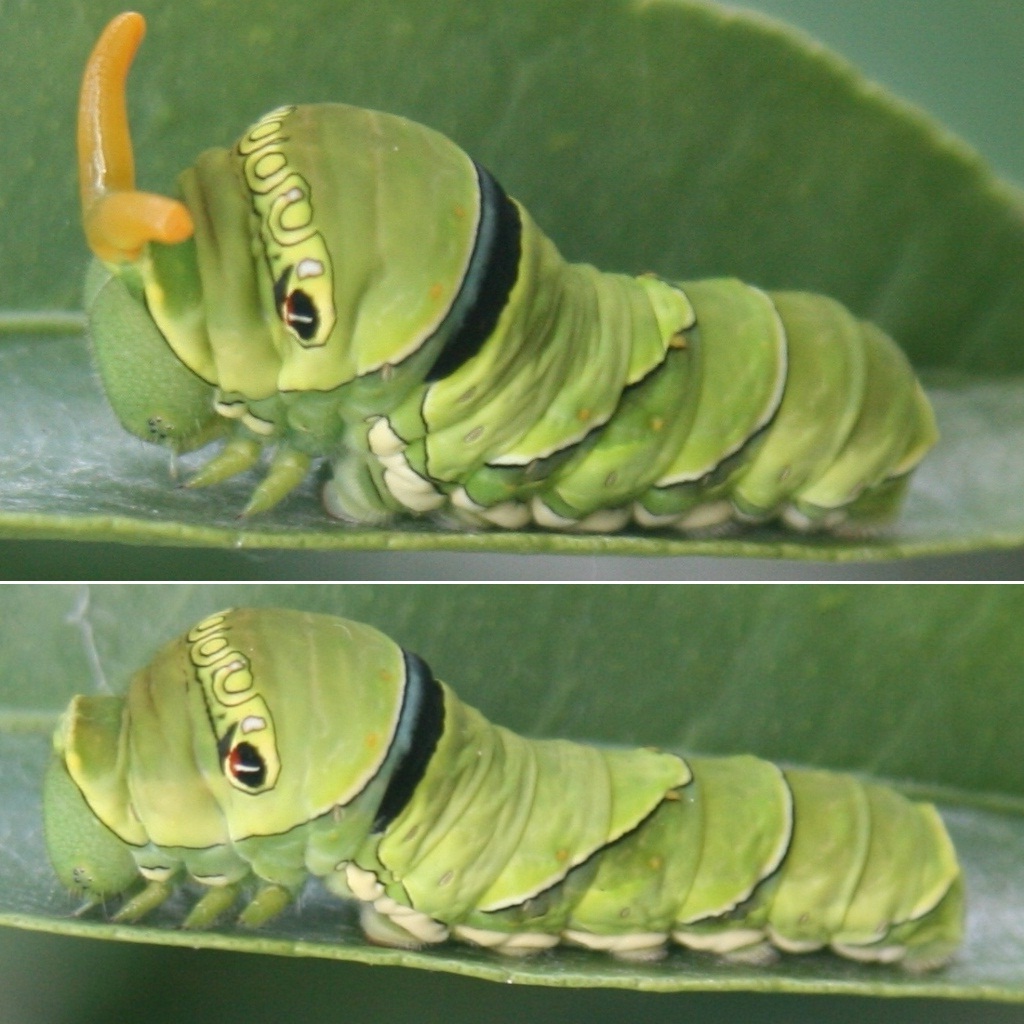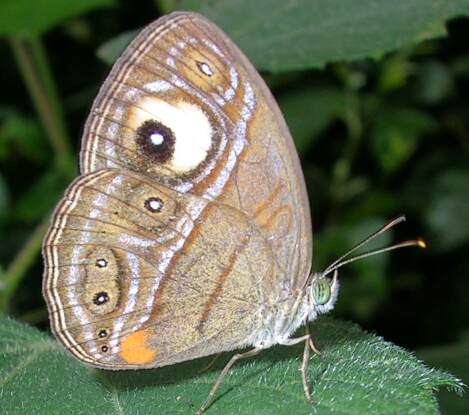|
Papilio Appalachiensis
''Papilio appalachiensis'', the Appalachian tiger swallowtail, is a species of swallowtail butterfly found in eastern North America, particularly in the Appalachian Mountains. It is a hybrid of another two ''Papilio'' species, ''Papilio canadensis'' and ''Papilio glaucus'', with which it shares many characteristics. The butterflies are normally yellow and contain black patterns in their wings. Their wingspans range from 86 to 115 mm. The caterpillars range in color from green and yellow to orange and are ornamented with black specks that give them the appearance of a bird dropping, which is useful for camouflage, or a large eye, a form of mimicry that is also efficient for protection. This species is univoltine. Females lay their eggs in May. Taxonomy ''Papilio appalachiensis'' is a member of the genus ''Papilio'' in the order Lepidoptera. ''P. appalachiensis'' is considered to be a hybrid of two other members of the genus ''Papilio'': ''Papilio canadensis'' and ''Papilio ... [...More Info...] [...Related Items...] OR: [Wikipedia] [Google] [Baidu] |
Holotype
A holotype is a single physical example (or illustration) of an organism, known to have been used when the species (or lower-ranked taxon) was formally described. It is either the single such physical example (or illustration) or one of several examples, but explicitly designated as the holotype. Under the International Code of Zoological Nomenclature (ICZN), a holotype is one of several kinds of name-bearing types. In the International Code of Nomenclature for algae, fungi, and plants (ICN) and ICZN, the definitions of types are similar in intent but not identical in terminology or underlying concept. For example, the holotype for the butterfly '' Plebejus idas longinus'' is a preserved specimen of that subspecies, held by the Museum of Comparative Zoology at Harvard University. In botany, an isotype is a duplicate of the holotype, where holotype and isotypes are often pieces from the same individual plant or samples from the same gathering. A holotype is not necessarily "typ ... [...More Info...] [...Related Items...] OR: [Wikipedia] [Google] [Baidu] |
Hybrid Speciation
Hybrid speciation is a form of speciation where hybridization between two different species leads to a new species, reproductively isolated from the parent species. Previously, reproductive isolation between two species and their parents was thought to be particularly difficult to achieve, and thus hybrid species were thought to be very rare. With DNA analysis becoming more accessible in the 1990s, hybrid speciation has been shown to be a somewhat common phenomenon, particularly in plants. In botanical nomenclature, a hybrid species is also called a nothospecies. Hybrid species are by their nature polyphyletic. Ecology A hybrid may occasionally be better fitted to the local environment than the parental lineage, and as such, natural selection may favor these individuals. If reproductive isolation is subsequently achieved, a separate species may arise. Reproductive isolation may be genetic, ecological, behavioral, spatial, or a combination of these. If reproductive isolation ... [...More Info...] [...Related Items...] OR: [Wikipedia] [Google] [Baidu] |
Pupa
A pupa ( la, pupa, "doll"; plural: ''pupae'') is the life stage of some insects undergoing transformation between immature and mature stages. Insects that go through a pupal stage are holometabolous: they go through four distinct stages in their life cycle, the stages thereof being egg, larva, pupa, and imago. The processes of entering and completing the pupal stage are controlled by the insect's hormones, especially juvenile hormone, prothoracicotropic hormone, and ecdysone. The act of becoming a pupa is called pupation, and the act of emerging from the pupal case is called eclosion or emergence. The pupae of different groups of insects have different names such as ''chrysalis'' for the pupae of butterflies and ''tumbler'' for those of the mosquito family. Pupae may further be enclosed in other structures such as cocoons, nests, or shells. Position in life cycle The pupal stage follows the larval stage and precedes adulthood (''imago'') in insects with complete metamorphosi ... [...More Info...] [...Related Items...] OR: [Wikipedia] [Google] [Baidu] |
Chrysalis
A pupa ( la, pupa, "doll"; plural: ''pupae'') is the life stage of some insects undergoing transformation between immature and mature stages. Insects that go through a pupal stage are holometabolous: they go through four distinct stages in their life cycle, the stages thereof being egg, larva, pupa, and imago. The processes of entering and completing the pupal stage are controlled by the insect's hormones, especially juvenile hormone, prothoracicotropic hormone, and ecdysone. The act of becoming a pupa is called pupation, and the act of emerging from the pupal case is called eclosion or emergence. The pupae of different groups of insects have different names such as #Chrysalis, ''chrysalis'' for the pupae of butterflies and ''tumbler'' for those of the mosquito family. Pupae may further be enclosed in other structures such as #Cocoon, cocoons, nests, or Animal shell, shells. Position in life cycle The pupal stage follows the larval stage and precedes adulthood (''imago'') in ins ... [...More Info...] [...Related Items...] OR: [Wikipedia] [Google] [Baidu] |
Prunus Serotina
''Prunus serotina'', commonly called black cherry,World Economic Plants: A Standard Reference, Second Edition'. CRC Press; 19 April 2016. . p. 833–. wild black cherry, rum cherry, or mountain black cherry, is a deciduous tree or shrub of the genus ''Prunus''. Despite being called black cherry, it is not very closely related to the commonly cultivated cherries such as sweet cherry ''Prunus avium'', commonly called wild cherry, sweet cherry, gean, or bird cherryWorld Economic Plants: A Standard Reference, Second Edition'. CRC Press; 19 April 2016. . p. 833–. is a species of cherry, a flowering plant in the rose family, ... (''P. avium''), sour cherry (''P. cerasus'') and cherry blossom, Japanese flowering cherries (''P. serrulata'', ''P. speciosa'', ''P. sargentii'', ''P. incisa'', etc.) which belong to Prunus subg. Cerasus, ''Prunus'' subg. ''Cerasus''. Instead, ''P. serotina'' belongs to Prunus subg. Padus, ''Prunus'' subg. ''Padus'', a subgenus also including Eurasian b ... [...More Info...] [...Related Items...] OR: [Wikipedia] [Google] [Baidu] |
Osmeterium
The osmeterium is a defensive organ found in all papilionid larvae, in all stages. The organ is situated in the prothoracic segment and can be everted when the larva feels threatened. The everted organ resembles a fleshy forked tongue (not unlike a snake tongue), and this along with the large eye-like spots on the body might be used to startle birds and small reptiles. The osmeterial organ remains inside the body in the thoracic region in an inverted position and is everted when the larva is disturbed in any way emitting a foul, disagreeable odor which serves to repel ants, small spiders and mantids. To humans, this odour is rather strong but pleasant, usually smelling like a concentrated scent of the caterpillar’s food plant and pineapple. The constitution of the osmeterial secretion varies from species to species and contains monoterpene hydrocarbons, sesquiterpenic compounds or a mixture of aliphatic acids and esters The fine structure of the osmeterium of ''Papilio ... [...More Info...] [...Related Items...] OR: [Wikipedia] [Google] [Baidu] |
Eyespot (mimicry)
An eyespot (sometimes ocellus) is an eye-like marking. They are found in butterflies, reptiles, cats, birds and fish. Eyespots could be explained in at least three different ways. They may be a form of mimicry in which a spot on the body of an animal resembles an eye of a different animal, to deceive potential predator or prey species. They may be a form of self-mimicry, to draw a predator's attention away from the prey's most vulnerable body parts. Or they may serve to make the prey appear inedible or dangerous. Eyespot markings may play a role in intraspecies communication or courtship; the best-known example is probably the eyespots on a peacock's display feathers. The pattern-forming biological process (morphogenesis) of eyespots in a wide variety of animals is controlled by a small number of genes active in embryonic development, including the genes called Engrailed, Distal-less, Hedgehog, Antennapedia, and the Notch signaling pathway. Artificial eyespots have been sh ... [...More Info...] [...Related Items...] OR: [Wikipedia] [Google] [Baidu] |
Caterpillar
Caterpillars ( ) are the larval stage of members of the order Lepidoptera (the insect order comprising butterflies and moths). As with most common names, the application of the word is arbitrary, since the larvae of sawflies (suborder Symphyta) are commonly called caterpillars as well. Both lepidopteran and symphytan larvae have eruciform body shapes. Caterpillars of most species eat plant material ( often leaves), but not all; some (about 1%) eat insects, and some are even cannibalistic. Some feed on other animal products. For example, clothes moths feed on wool, and horn moths feed on the hooves and horns of dead ungulates. Caterpillars are typically voracious feeders and many of them are among the most serious of agricultural pests. In fact, many moth species are best known in their caterpillar stages because of the damage they cause to fruits and other agricultural produce, whereas the moths are obscure and do no direct harm. Conversely, various species of caterpi ... [...More Info...] [...Related Items...] OR: [Wikipedia] [Google] [Baidu] |
Spruce Knob
Spruce Mountain, located in eastern West Virginia, is the highest ridge of the Allegheny Mountains. The whale-backed ridge extends for only from northeast to southwest, but several of its peaks exceed in elevation. The summit, Spruce Knob (4863 ft; 1482 m), is the highest Allegheny Mountain point both in the state and the entire range, which spans four states. Geography Spruce Mountain lies mostly within the Spruce Knob–Seneca Rocks National Recreation Area, a U.S. National Recreation Area (NRA) located within the Monongahela National Forest (MNF) in Pendleton County. It extends from the vicinity of Onego in the north to near Cherry Grove in the south. Brushy Run separates Timber Ridge — a spur of the main mountain — to the east. The ridgelines of Spruce Mountain and Timber Ridge continue to the north of US Route 33 as Hoffman Ridge and Smith Mountain, respectively. To the south (south of West Virginia 28) the line continues as Big Mountain. Prominent peaks of S ... [...More Info...] [...Related Items...] OR: [Wikipedia] [Google] [Baidu] |
Indiana University Press
Indiana University Press, also known as IU Press, is an academic publisher founded in 1950 at Indiana University that specializes in the humanities and social sciences. Its headquarters are located in Bloomington, Indiana. IU Press publishes 140 new books annually, in addition to 39 academic journals, and maintains a current catalog comprising some 2,000 titles. Indiana University Press primarily publishes in the following areas: African, African American, Asian, cultural, Jewish, Holocaust, Middle Eastern studies, Russian and Eastern European, and women's and gender studies; anthropology, film studies, folklore, history, bioethics, music, paleontology, philanthropy, philosophy, and religion. IU Press undertakes extensive regional publishing under its Quarry Books imprint. History IU Press began in 1950 as part of Indiana University's post-war growth under President Herman B Wells. Bernard Perry, son of Harvard philosophy professor Ralph Barton Perry, served as the first d ... [...More Info...] [...Related Items...] OR: [Wikipedia] [Google] [Baidu] |
Mimicry
In evolutionary biology, mimicry is an evolved resemblance between an organism and another object, often an organism of another species. Mimicry may evolve between different species, or between individuals of the same species. Often, mimicry functions to protect a species from predators, making it an anti-predator adaptation. Mimicry evolves if a receiver (such as a predator) perceives the similarity between a mimic (the organism that has a resemblance) and a model (the organism it resembles) and as a result changes its behaviour in a way that provides a selective advantage to the mimic. The resemblances that evolve in mimicry can be visual, acoustic, chemical, tactile, or electric, or combinations of these sensory modalities. Mimicry may be to the advantage of both organisms that share a resemblance, in which case it is a form of mutualism; or mimicry can be to the detriment of one, making it parasitic or competitive. The evolutionary convergence between groups is driven by th ... [...More Info...] [...Related Items...] OR: [Wikipedia] [Google] [Baidu] |


_mating_with_emerging_butterfly_from_pupa_in_Hyderabad%2C_AP_W_IMG_9437.jpg)




